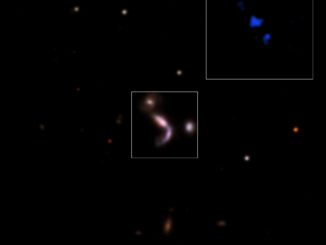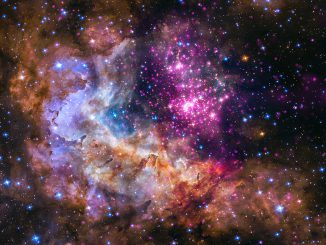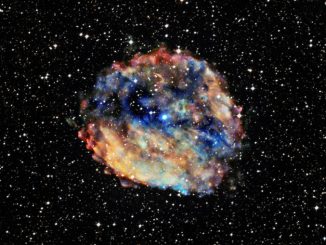
Chandra X-ray Center



Two stars, three dimensions, and oodles of energy
For decades, astronomers have known about irregular outbursts from the double star system V745 Sco, which is located about 25,000 light-years from Earth. Astronomers were caught by surprise when previous outbursts from this system were seen in 1937 and 1989. When the system erupted on February 6, 2014, however, scientists were ready to observe the event with a suite of telescopes including NASA’s Chandra X-ray Observatory.

Chandra peers into a nurturing cloud
In the context of space, the term ‘cloud’ can mean something rather different from the fluffy white collections of water in the sky or a way to store data or process information. Giant molecular clouds are vast cosmic objects, composed primarily of hydrogen molecules and helium atoms, where new stars and planets are born. These clouds can contain more mass than a million Suns, and stretch across hundreds of light-years.



Is dark matter “fuzzy”?
Astronomers have used data from NASA’s Chandra X-ray Observatory to study the properties of dark matter, the mysterious, invisible substance that makes up a majority of matter in the universe. The study, which involves 13 galaxy clusters, explores the possibility that dark matter may be more “fuzzy” than “cold,” perhaps even adding to the complexity surrounding this cosmic conundrum.


Discovering the X-ray treasures in Chandra’s archives
Each year, NASA’s Chandra X-ray Observatory helps celebrate American Archive Month by releasing a collection of images using X-ray data. Each of these six new images — representing just a small fraction of the treasures that reside in Chandra’s unique archive — also includes data from telescopes covering other parts of the electromagnetic spectrum, such as visible and infrared light.

Young magnetar likely slowest pulsar ever detected
Using X-ray observatories, astronomers have found evidence for what is likely one of the most extreme pulsars, or rotating neutron stars, ever detected. The source exhibits properties of a highly magnetised neutron star, or magnetar, yet its deduced spin period of 6⅔ hours is thousands of times longer than any pulsar ever observed.
